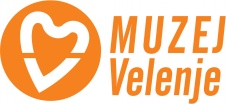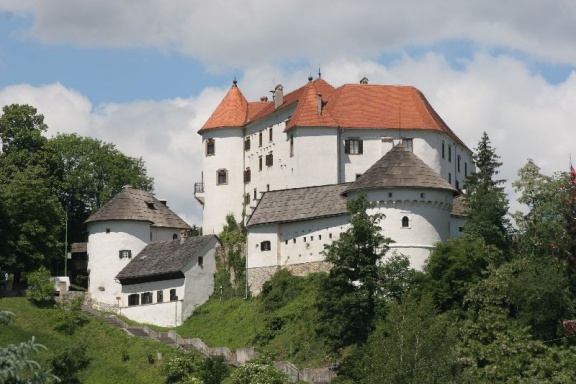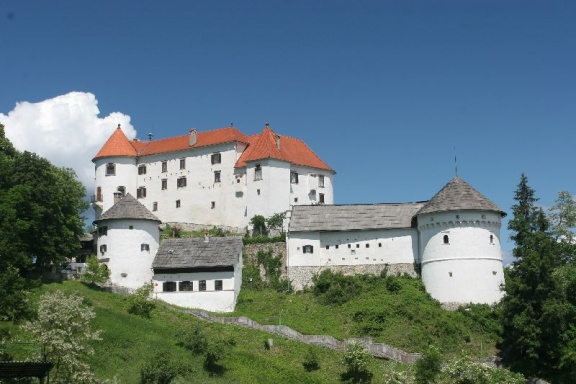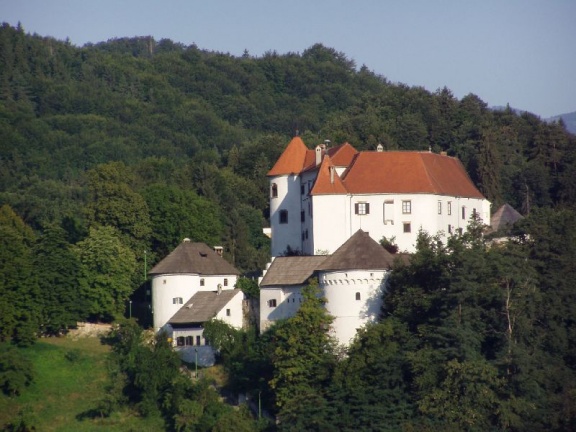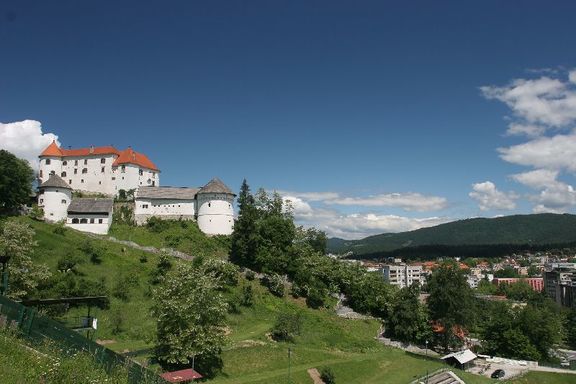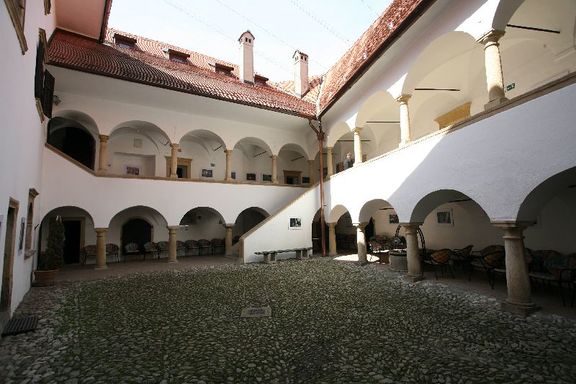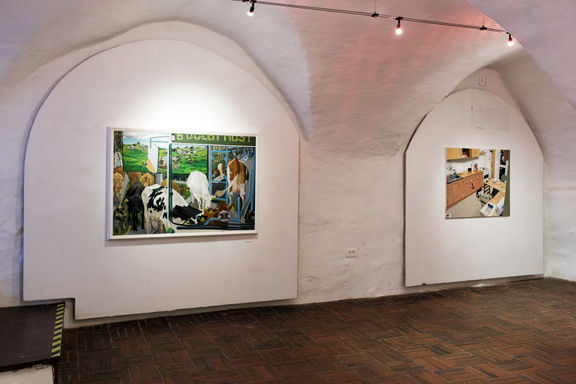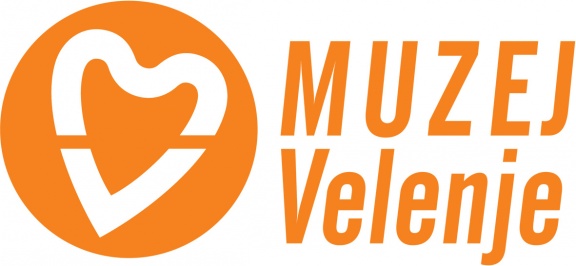Difference between revisions of "Velenje Castle"
Ivan Pirnat (talk | contribs) |
(refreshed) |
||
| (19 intermediate revisions by 7 users not shown) | |||
| Line 1: | Line 1: | ||
{{Article | {{Article | ||
| − | | status = | + | | status = PHOTO FEATURED |
| maintainer = Ivan Pirnat | | maintainer = Ivan Pirnat | ||
}} | }} | ||
| Line 6: | Line 6: | ||
| name = Velenje Castle | | name = Velenje Castle | ||
| localname = Velenjski grad | | localname = Velenjski grad | ||
| − | | | + | | logo = Velenje Museum (logo).jpg |
| + | | street = Ljubljanska 54 | ||
| + | | town = SI-3320 Velenje | ||
| telephone = 386 (0) 3 898 2630 | | telephone = 386 (0) 3 898 2630 | ||
| fax = 386 (0) 3 898 2640 | | fax = 386 (0) 3 898 2640 | ||
| Line 12: | Line 14: | ||
| website = http://www.muzej-velenje.si/ | | website = http://www.muzej-velenje.si/ | ||
| managed by = Velenje Museum | | managed by = Velenje Museum | ||
| − | | opening hours = Tue to Sun | + | | opening hours = 10am-6pm Tue to Sun, closed Mon |
| contacts = {{Contact | | contacts = {{Contact | ||
| − | | name = | + | | name = Mojca Ževart |
| role = Director | | role = Director | ||
| + | | email = mojca.zevart@muzej-velenje.si | ||
}} | }} | ||
}} | }} | ||
| Line 21: | Line 24: | ||
{{Teaser| | {{Teaser| | ||
| − | [[Velenje Castle]] was a strategically important fortress first mentioned in | + | {{Wide image|Velenje Castle - 02.jpg}} |
| + | |||
| + | [[Velenje Castle]] was a strategically important fortress first mentioned in [[established::1270]] from which, together with the neighbouring castles of Šalek and Ekenštajn, various owners in the middle ages controlled the routes from the Celjska kotlina basin to Carinthia. | ||
| + | |||
| + | Today the castle houses the [[Velenje Museum]], established in 1957 as the Museum of Slovene Coalmines. The [[Velenje Museum]] gives the castle its full functionality filling the premises with numerous exhibitions. The castle is also a popular venue for various cultural and music events organised by the [[Velenje Library]]. | ||
}} | }} | ||
| − | == | + | ==History== |
| − | + | ||
| − | After the Second World War the castle | + | The first documents mention the owners of Velenje Castle (Welen, vest Welen, Wöllan) as the Kunšper gentlemen in 1270. Their relatives, the Ptuj gentlemen bought the castle in 1322, but gave it away as dowry to the Liechtenstein family. The Counts of Celje conquered the castle for a while at the end of the 14th century, but had to return it after the decree of Duke Albert of Habsburg in 1393. The Family Wagen von Wagensberg entirely renovated the construction in the 16th century and the fortress was transformed into a Renaissance residence. Until the beginning of the 17th century, the castle changed many owners, then the Sauer family remained as owners for almost 200 years. In the 19th century it was bought by Karl and Bianca Adamovich. The last owner of the castle, Count Coronnini-Kromberg used it only as a summer residence until 1943 when the Germans drove him out of Velenje after the Italian capitulation. |
| + | |||
| + | After the Second World War the castle was nationalised. Social apartments were made there, a lot of furniture was demolished and the building would have fallen into ruins if the Velenje Coalmine had not founded the Museum of Slovene Coalmines there in 1957. The first collections were gradually organised and at the same time an intensive renovation of the building was carried out. Today Velenje Castle is one of the best preserved castles in Slovenia. | ||
| − | + | ==Museum and gallery collections== | |
| + | The ''Mastodon Collection'' of the prehistoric elephant from Škale near Velenje; ''Saleška Valley between the 10th and 17th Century''; ''Baroque Church Art'' (St George in Škale); the ''African Collection of František Foit''; reconstructions of a shop with mixed goods and an inn from the beginning of 20th century; ''The City that was Called a Miracle''; ''Šaleška Valley between 1941 and 1945''; as well as permanent art exhibitions of the Slovene painter [[Lojze Perko]], the[[ Ciril Cesar]] sculpture collection, and the [[Gorenje Art Collection]] with 65 selected works from Slovene Impressionism to contemporary art. | ||
==See also== | ==See also== | ||
* [[Velenje Museum]] | * [[Velenje Museum]] | ||
| + | * [[Gorenje Art Collection]] | ||
* [[Velenje Library]] | * [[Velenje Library]] | ||
* [[Velenje Gallery]] | * [[Velenje Gallery]] | ||
| Line 40: | Line 51: | ||
* [http://kraji.eu/slovenija/velenjski_grad/IMG_1696_velenjski_grad_od_dalec/eng Pictures of Velenje Castle on kraji.eu website] | * [http://kraji.eu/slovenija/velenjski_grad/IMG_1696_velenjski_grad_od_dalec/eng Pictures of Velenje Castle on kraji.eu website] | ||
* [http://www.muzej-velenje.si/grad.php Velenje Castle on Velenje Museum website] | * [http://www.muzej-velenje.si/grad.php Velenje Castle on Velenje Museum website] | ||
| − | * [http://www.burger.si/Velenje/360_VelenjskiGrad2.html VR Panoramas of Velenje castle on | + | * [http://www.burger.si/Velenje/360_VelenjskiGrad2.html VR Panoramas of Velenje castle] on [[Virtual Guide to Slovene Museums and Galleries]] |
| + | |||
| + | {{gallery}} | ||
[[Category:Monuments and sites]] | [[Category:Monuments and sites]] | ||
| + | [[Category:Castles]] | ||
| + | |||
| + | [[Category:Updated 2017]] | ||
Latest revision as of 11:54, 7 January 2020
History
The first documents mention the owners of Velenje Castle (Welen, vest Welen, Wöllan) as the Kunšper gentlemen in 1270. Their relatives, the Ptuj gentlemen bought the castle in 1322, but gave it away as dowry to the Liechtenstein family. The Counts of Celje conquered the castle for a while at the end of the 14th century, but had to return it after the decree of Duke Albert of Habsburg in 1393. The Family Wagen von Wagensberg entirely renovated the construction in the 16th century and the fortress was transformed into a Renaissance residence. Until the beginning of the 17th century, the castle changed many owners, then the Sauer family remained as owners for almost 200 years. In the 19th century it was bought by Karl and Bianca Adamovich. The last owner of the castle, Count Coronnini-Kromberg used it only as a summer residence until 1943 when the Germans drove him out of Velenje after the Italian capitulation.
After the Second World War the castle was nationalised. Social apartments were made there, a lot of furniture was demolished and the building would have fallen into ruins if the Velenje Coalmine had not founded the Museum of Slovene Coalmines there in 1957. The first collections were gradually organised and at the same time an intensive renovation of the building was carried out. Today Velenje Castle is one of the best preserved castles in Slovenia.
Museum and gallery collections
The Mastodon Collection of the prehistoric elephant from Škale near Velenje; Saleška Valley between the 10th and 17th Century; Baroque Church Art (St George in Škale); the African Collection of František Foit; reconstructions of a shop with mixed goods and an inn from the beginning of 20th century; The City that was Called a Miracle; Šaleška Valley between 1941 and 1945; as well as permanent art exhibitions of the Slovene painter Lojze Perko, theCiril Cesar sculpture collection, and the Gorenje Art Collection with 65 selected works from Slovene Impressionism to contemporary art.
See also
External links
- Pictures of Velenje Castle on kraji.eu website
- Velenje Castle on Velenje Museum website
- VR Panoramas of Velenje castle on Virtual Guide to Slovene Museums and Galleries



